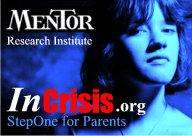By: Michael Conner, Psy.D Important QuestionsWilderness. Therapy. Two words that bring hope as well as concerns to the minds of parents and professionals who consider enrolling children in programs that offer therapeutic experiences within outdoor settings. There are many important questions that must be answered by parents and professionals who are considering the wilderness therapy alternative.
How Many Wilderness Therapy Programs Are There?There are an estimated 26 wilderness therapy programs in the United States that offer "wilderness therapy" to adolescents and teenagers. Program vary in terms of duration, structure, services and unique characteristics.
For the most part, wilderness therapy programs provide interventions for youth with psychological, emotional, behavioral, learning or substance abuse problems. The programs can be very different in philosophy, structure and the populations they are best equipped to handle. Examples of wilderness programs that are very different are Catherine Freer, Second Nature, Redcliff Ascent and SageWalk.
In contrast to wilderness therapy programs, there are literally hundreds of wilderness, outdoor and adventure programs that work almost entirely with youth who represent a low risk. Examples of these programs include Outward Bound and the National Outdoor Leadership Schools. Outdoor and adventure programs also vary a great deal in structure and purpose. For the most part they focus primarily on adventure, challenges, facing adversity, skill building, teamwork, leadership and creating positive experiences that translate into healthy character development.
Who Owns and Operates Wilderness Therapy Programs?A few wilderness therapy programs are still owned and operated much like medical care used to be years ago before managed health care took over. In the beginning, wilderness therapy programs were free standing alternatives to traditional approaches such as psychiatric hospitals, psychotherapy and juvenile corrections. Today, a few wilderness therapy programs are being bought out by larger corporations that use these programs as part of a referral network of boarding schools and transition home care programs for teenagers. The larger programs are using many of the same business approaches as managed health care corporations in order to create economics of scale, leverage and to generate revenue for their services from health care insurance. Some professionals wonder if health insurance re-imbursement will change the quality of wilderness therapy like it did health care. Some argue for the worst case scenario and others would say economic control by insurance companies will make the industry better. Many parents and professionals referring to these programs are unaware that some wilderness, outdoor and adventure programs are owned or affiliated with therapeutic boarding schools, "emotional growth" schools, traditional boarding schools or residential treatment programs. In addition, there may be an official or unofficial referral relationship between wilderness programs and private schools. This can, but does not necessarily create problems. Let me give you an example of how this can become a problem. The practice is common in medicine where, for example, a kidney doctor (a nephrologist) will treat you and refer you to a dialysis clinic (that he may own or have a business interest in). This is generally not a problem unless you don't need dialysis or that doctor's clinic is not a good one and it is overpriced. When wilderness programs are affiliated with private boarding schools, there is an inherent pressure to refer back to each other in order to maintain good will and a positive referral relationship. This can bias a program's recommendation. Many private boarding schools recommend or even require that students with special needs complete a wilderness therapy program before admission to their boarding school program. Some wilderness therapy programs, (especially the brief 21 day programs) frequently refer their graduates to a boarding school or transition program that is offered or sponsored by that wilderness program. In some cases, parents will be asked to enroll their child in a wilderness therapy program before the boarding school will admit the child. The reason for this practice is that graduates from wilderness programs generally do very well in boarding schools when compared to those who did not participate in a wilderness program. Unfortunately, if a boarding school refers your child to a wilderness program, that program will probably refer your child back to that boarding school - rather than help you bring your child back home. The issue in some cases may not be "Who owns and operates the wilderness program?, but rather, "What is the referral relationship between school programs and those who control the wilderness program economically?" There are only a few programs that are non-profit and a few that are not affiliated with a network of private for-profit boarding schools. Non-profit programs are not necessarily the best program for your child, however, there operation and mission is usually much more transparent and open to the public.
Copyright 2000 to 2011, Michael G. Conner |


